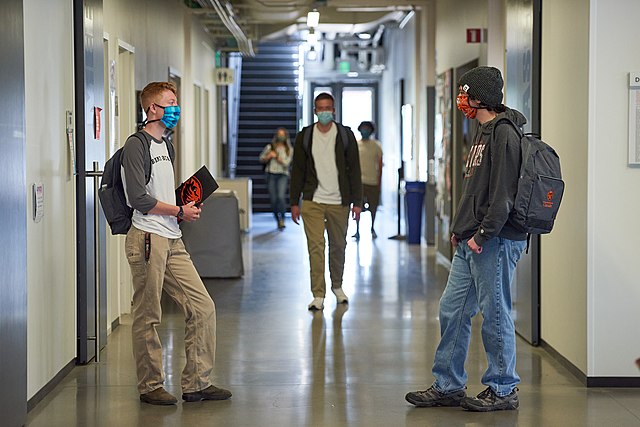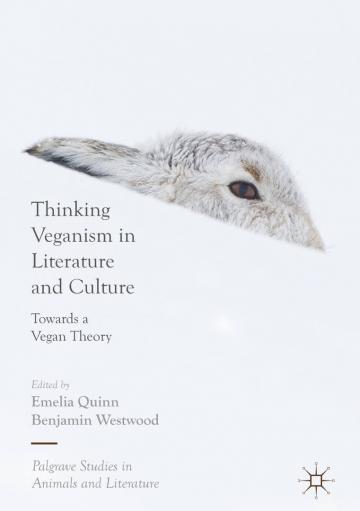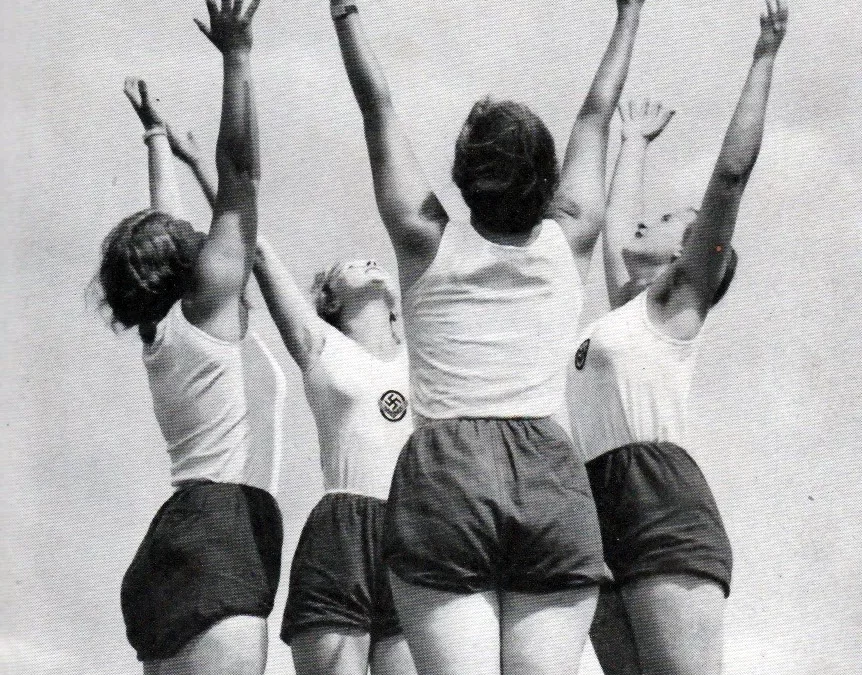Listicles resemble and are rightly mocked by their name – diminutive, patterned, noticeably lacking conceptual testicles – and yet I am drawn to any that I detect. I’ll be walking the prose of an article about the Iowa caucas, when a link to ‘Ten Reasons To Avoid Norway’ pops up on the right-hand side of my screen. Immediately I find myself sucked into mental quicksand and spat out on the far side of Planet Journalism, where I hop merrily from point to point, satisfy my decimal urge, and rejoice in the hollow impression that these ten points are the only ones that can be made on the subject.
And so, a yearling dog-owner, I am drawn to write one of my own.
Here is what I have learned that the books, articles, and listicles on the subject of dog-owning hadn’t told me:
1. Sadness being the price we pay for happiness is particularly obvious to dog-owners. We get dogs that we intend to outlive. The Queen has recently announced her decision no longer to breed her corgis. The seven-to-seventeen year average lifespan is long enough for humans to become attached (and for Leonard Cohen’s line ‘Like their father or their dog just died’ to stop sounding like zeugma) – and short enough for the owner to see their decline and death. Dogs are children that we intend to outlive; and when we replace them, we set ourselves up to grieve anew. With a spouse, we expect to tumble into unconsciousness together or soon after. With dogs, we witness death in anticipation and close-up, just as we do when we watch tragedies.
There is also another melancholy in dog-owning. Like the Little Mermaid, dogs love, they understand our language (up to several hundred words), but they cannot speak. Is verbal language what they give up when they choose to join us from a dog universe far away? Is that why they caress us with their tongues, for want of the ability to do anything else with it? But if the melancholy is not theirs, then it is certainly ours. These are friends that we will never, ever have a verbal conversation with. No wonder that we speculate, like Mikhail Bulgakov in Heart of a Dog, on reversing the mermaid operation, and making of our dog somebody that we can talk with.
2. Though you can’t talk with them, dogs let you talk with other people. As Kate Fox observes in her English ethnography Watching the English, we English speak with strangers only in a few circumstances, of which a dog’s presence is one. Puppies attract a particular kind of gushing female attention, but now that our Solveig no longer resembles the puppy from the Andrex advert (the temptation to cash in on her was felt, if resisted), it is clear that all dogs which are not obviously sociopathic or ill invite conversations between strangers. These have certain parameters. Conversation should start with and remain focused on the dog (or dogs if both parties have them present), and be addressed, if not to the dog, then whilst looking at it. The following should be enquired about: the dog’s age, its sex, and its name. Possibly also its breed, its status with regard to neutering, and what it is like to look after. Grumbles about non-dog-owners’ grumbles about dogs should be shared in the spirit of solidarity, as may anecdotes about encounters with such people, tips about where to take dogs off-lead, types of lead, training classes, dog-sitters, and the like. The dog should be described as ‘lovely’, ‘magnificent’, ‘gorgeous’, or similar, as most appropriate or least-inappropriate to the dog in question. Dogs’ names should be remembered and repeated on a subsequent meeting; human names – or any other counterpart details to those above – should not be exchanged, until the acquaintance is at least a few years old. A ‘hi’ and near-eye contact is permitted at greeting. No parting is expected; it is fine to rush off after your dog without saying a word. The word ‘community’, much misapplied in media discourse (as in ‘the’ ‘Muslim community’), is rightly appled to owners of dogs, who constitute a society of warm mutual support and appreciation.
3. You don’t get embarrassed by dog sex. Dogs’ investigations of each others’ bottoms do not even require a light-hearted comment between the owners. If someone else’s dog starts giving yours what looks very much like oral sex, and you are a woman and the other’s owner a man, then there may be cause for a moment’s self-conscious eye contact, or a little quip, but no more. Unless, that is, you are looking for a partner – in which case I can think of no better tactic than laughingly prolonging the eye contact, and, God-willing, speeding along the path of A Hundred and One Dalmations’ Roger and Anita.
The question of who should deal with contraception is unresolved. Many males’ owners don’t neuter their dogs, for reasons which include macho ones, and expect the females’ owners (like female humans) to take the responsibility themselves. This is despite the fact that if a male were to impregnate a female, all of the pleasure and of the pain would fall squarely on the female’s owner and the female herself.
The feminism of this point is somewhat undermined by that fact that medical considerations, apparently, point towards neutering females, for some reason relating to womb infections…
4. Most people in England like dogs but some don’t. And the ones who don’t you need to negotiate. Experience of Kilburn (London NW6) teaches the following: white people and East Asians, especially women, are likely to like dogs. Muslims (especially Arabs and North Africans) and Caribbeans, especially the women and children, are likely to dislike dogs. Indeed, children in these categories are taught to fear them, and will push themselves against walls as you pass, sometimes screaming and twisting and generally exciting the passing dog to pay playful attentions. Yet with Muslims, especially men, I feel a shiver of collective guilt. The photos that I first saw late in 2003, of chained dogs threatening naked men in Abu Ghraib, flash through my mind, along with the question of whether they are flashing through theirs. ‘Solveig’s not like that. I’m not like that’ I repeat to them silently as I pass. I pull Solveig closely in to me, and will her to to be looking benign.
5. Eugenics is fine in dogs but not in people. Amongst people, it has had a bad odour ever since it was popular with various breeds of fascism. Its modern manifestations under other names – abortion of female foetuses in poor countries, designer babies in rich ones – are morally doubted if not condemned outright. This political development has yet to reach Crufts. Here hereditary aristocracy, so far from being outdated, is celebrated. Pedigree family trees are displayed on walls by owners who would never do the same for themselves. Certainly – the approved breeds themselves are treated between each other with amazing egalitarianism. But breed-purity is as much a desideraton as to any racist. By way of counterbalance, in the Dog Community at large, the moral cachet of adopting a rescue dog matches whatever prestige comes from owning a pedigree. And – to end with biology as in point 3 – humans are biologically identical as compared to dogs, and not all cross-breed matings make happy puppies.
6. Size doesn’t matter. Amongst humans the role of physical strength has diminished as societies have become richer, given hard physical labour to an ever-smaller proportion of people, and reduced violence (as Stephen Pinker argued, perhaps too strongly, in The Better Angels of our Nature). There has been a minor reversal of this in the last few centuries, visible today in any gym, according to which sexual desirability in males has been strongly correlated to height and strength (whilst more recently being correlated in women to the visible absence of strength). But such progress as humans – especially Protestants – have ever made in not judging each other by their covers is as nothing compared to what dogs have been doing all along. For them, size is of no interest at all. Status lies in other things, not visible to us, but inherent in their Wesen, which will make a labrador lie down before a bichon frisé which has a particular air of command. Size gaps are no obstacle to play, nor to desire. Tall women must look in envy at the indiscriminate attention received by tall female dogs from dogs of all shapes and sizes. We might look and learn.
7. You should make an effort to discover your inner dominant, and to get your dog to find its inner submissive. Dogs are not only not impressed by the size of other dogs, but by that of humans. The fact that we dwarf them physically, and, we believe, mentally, cuts no ice with them at all. As the best dog manual I have read put it, ‘treat your dog like a human, and it will treat you like a dog’. Many owners find themselves having to fabricate a disciplinary persona, but dogs can smell a fake a mile off. Nor does real rage awe them. If we fake a reprimand for the destruction of a loo roll, or scream at them for jumping into a pram or a Muslim picnic, then the first will be brushed off, and the latter taken as a challenge. What is, it seems, needed on all occasions is the serious, sincere reprimand that, say, the destruction of a particularly good pair of headphones might naturally elicit. But insofar as you fall short in dog discipline – and most owners do – it’s done to think and speak indulgently about your dog’s high spirits, rather as South European parents used to indulge bad behaviour in their male children. And, if you aren’t at heart speciesist, then you’re probably happy to muddle along with variable lines of command.
8. Dogs are one of three kinds. Those that, given a choice, are most interested in balls; those that are most interested in other dogs; and those that are most interested in humans. These preferences emerge clearly when the attractions compete in a park of dogs off-leash. A dog-dog approaches a ball-dog and is ignored for a ball; a person-dog pushes past another dog to get to that dog’s owner; two dog-dogs match each other in blissful play. Dogs can move between kinds according to their mood and stage of life. Solveig has always shown clear contempt for the Sisyphean task of retrieval, despite being bred to do precisely this. On first meeting other dogs, she embraced them happily whilst out, and returned happily to humans on her way home – rather as I think I did with children versus my parents when I was a child. But, as she grows up, she becomes less and less interested in dogs – as though they remain, to her, children, and she is growing beyond them. Which suits us, as humans, fine.
9. Dogs are terrible for gardens. They wee on them and kill the grass. They dig in them and kill both grass and bigger things. But I’ve decided to be relaxed about this. I had a big gardening phase for a couple of years, when I tried turning our garden into one that wouldn’t disgrace three rather impressive ones, tended by retired people, which it adjoins. I am now beyond this phase. Gardening turns out to be speciesist in the opposite way to the dog world – tolerant, even encouraging, of miscegenation, but breathtakingly hierarchical between breeds, like the flowers in Alice Through the Looking Glass; indeed worse than the caste system in casting out weeds as untouchables. Plant-owning has its charms, to be sure. Spring flowers do cute things like popping up, of their own brave wills, when it is still cold. But they also do distressing things like dying protracted, reproachful and ugly deaths for reasons that are often unclear. Plants exist in an awkward category which spooks me. They don’t run about like golden retrievers. They don’t sit still like things (with the exception of garden stones, which miraculously rise to the surface of the soil). You design a garden and it doesn’t more or less stay that way, like a newly-decorated room does, but it does all kinds of things to depart from your plan. But it does so slowly, and with none of a dog’s honest defiance. Plants eat and excrete and grow and reproduce, but they don’t think about doing these things, or indeed at all – which makes them kind of undead. So, in a battle between conscious Solveig and the garden, let bonny Solveig win.
10. Dog-owning has hidden costs. Dogs not only cost to buy – even from a rescue shelter – feed, patch up at a vet’s, and insure. They destroy things that you never considered possible. A lead, it turns out, is not for life, but for a couple of months if you are lucky. Then something happens; a squirrel will suddenly appear and the lead will get strained, or the dog will find some free time alone with it. Dog toys don’t just get shredded; they vanish altogether. Expensive things, which you increasingly learn to keep out of the way, fall victim once every so often nonetheless, like ritual sacrifices; their replacement becomes part of the dog-budget. When a dog is off-leash the possibility always exists that it will do something truly awful and sue-able. That is what the third party protection on insurance policies is for; but you shudder to think of the trouble that would invoke it.
Dog-owning is such a joy that we do it despite the risk of causing pain to strangers, and the near-certainty of causing pain – that of having loved and lost – to ourselves.
But if people have eternal existence, why not animals (even plants, God help us)? The Mahabharata has it so. So does The Master and Marguerita, in which Pilate goes to heaven with his beloved Banga. So did a remarkable Christian-but-Darwinian biology fellow of Gonville and Caius College, who once told me he believed in just this.
As with all life, it is all gain.




